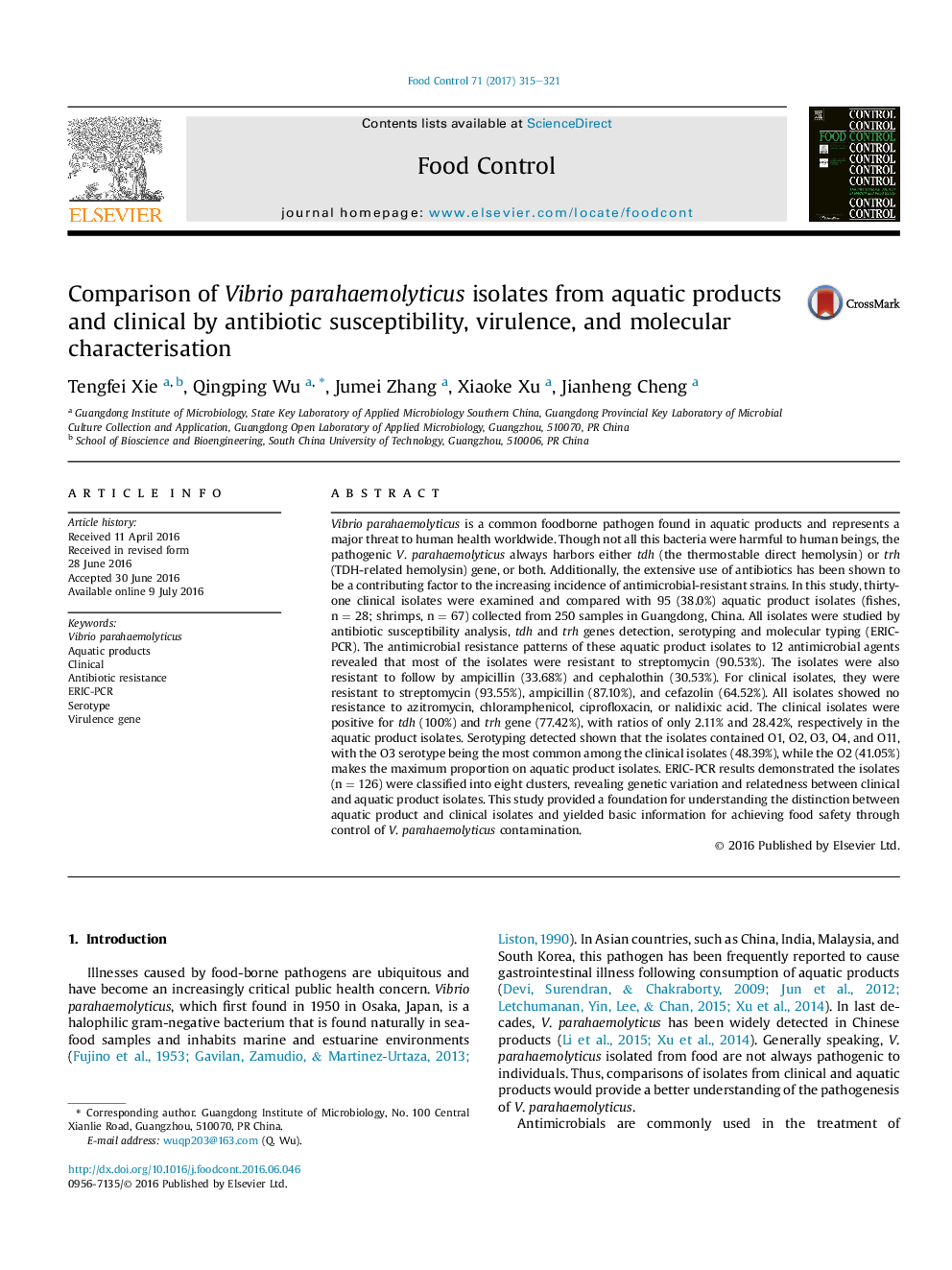| کد مقاله | کد نشریه | سال انتشار | مقاله انگلیسی | نسخه تمام متن |
|---|---|---|---|---|
| 6389971 | 1628391 | 2017 | 7 صفحه PDF | دانلود رایگان |
عنوان انگلیسی مقاله ISI
Comparison of Vibrio parahaemolyticus isolates from aquatic products and clinical by antibiotic susceptibility, virulence, and molecular characterisation
دانلود مقاله + سفارش ترجمه
دانلود مقاله ISI انگلیسی
رایگان برای ایرانیان
کلمات کلیدی
موضوعات مرتبط
علوم زیستی و بیوفناوری
علوم کشاورزی و بیولوژیک
دانش تغذیه
پیش نمایش صفحه اول مقاله

چکیده انگلیسی
Vibrio parahaemolyticus is a common foodborne pathogen found in aquatic products and represents a major threat to human health worldwide. Though not all this bacteria were harmful to human beings, the pathogenic V. parahaemolyticus always harbors either tdh (the thermostable direct hemolysin) or trh (TDH-related hemolysin) gene, or both. Additionally, the extensive use of antibiotics has been shown to be a contributing factor to the increasing incidence of antimicrobial-resistant strains. In this study, thirty-one clinical isolates were examined and compared with 95 (38.0%) aquatic product isolates (fishes, n = 28; shrimps, n = 67) collected from 250 samples in Guangdong, China. All isolates were studied by antibiotic susceptibility analysis, tdh and trh genes detection, serotyping and molecular typing (ERIC-PCR). The antimicrobial resistance patterns of these aquatic product isolates to 12 antimicrobial agents revealed that most of the isolates were resistant to streptomycin (90.53%). The isolates were also resistant to follow by ampicillin (33.68%) and cephalothin (30.53%). For clinical isolates, they were resistant to streptomycin (93.55%), ampicillin (87.10%), and cefazolin (64.52%). All isolates showed no resistance to azitromycin, chloramphenicol, ciprofloxacin, or nalidixic acid. The clinical isolates were positive for tdh (100%) and trh gene (77.42%), with ratios of only 2.11% and 28.42%, respectively in the aquatic product isolates. Serotyping detected shown that the isolates contained O1, O2, O3, O4, and O11, with the O3 serotype being the most common among the clinical isolates (48.39%), while the O2 (41.05%) makes the maximum proportion on aquatic product isolates. ERIC-PCR results demonstrated the isolates (n = 126) were classified into eight clusters, revealing genetic variation and relatedness between clinical and aquatic product isolates. This study provided a foundation for understanding the distinction between aquatic product and clinical isolates and yielded basic information for achieving food safety through control of V. parahaemolyticus contamination.
ناشر
Database: Elsevier - ScienceDirect (ساینس دایرکت)
Journal: Food Control - Volume 71, January 2017, Pages 315-321
Journal: Food Control - Volume 71, January 2017, Pages 315-321
نویسندگان
Tengfei Xie, Qingping Wu, Jumei Zhang, Xiaoke Xu, Jianheng Cheng,